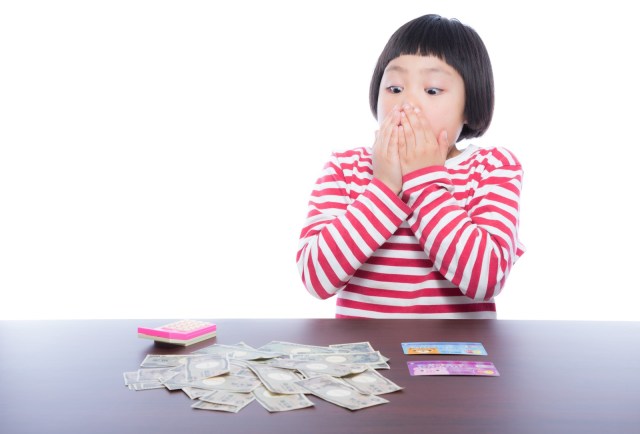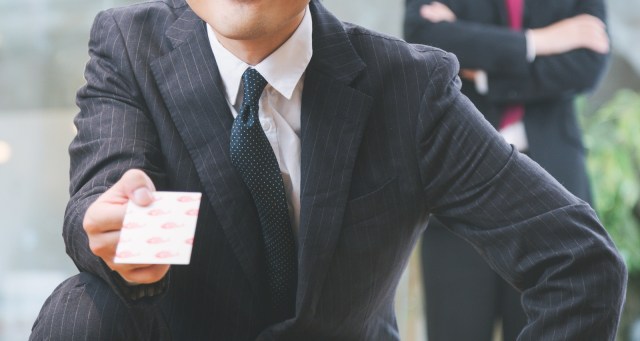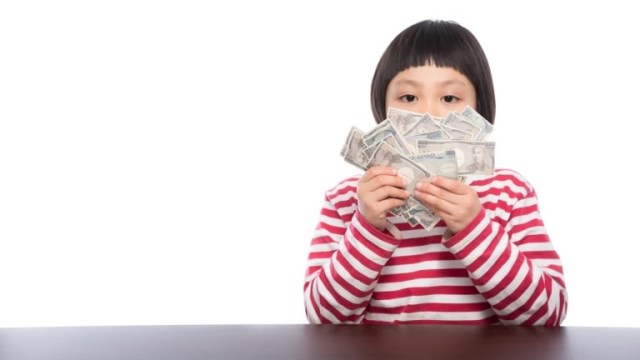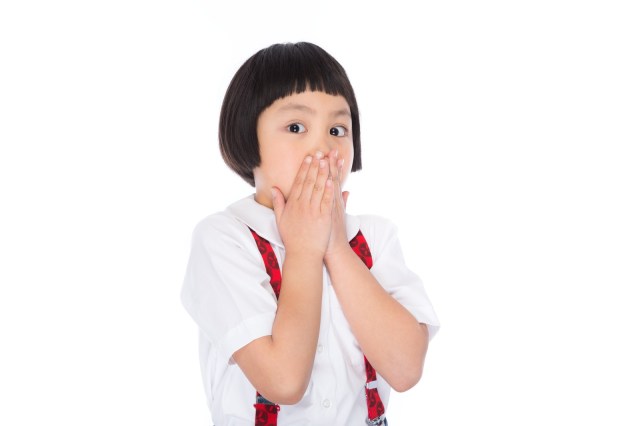
Grown-ups dish on the appropriate amounts of New Year’s money to gift depending on the age of a child.
With all of Japan now in the holiday lull that accompanies the biggest holiday of the year, New Year’s, it’s a rare opportunity for many Japanese people to kick back under the kotatsu, watch special TV programming, and spend their days eating, eating, and more eating. The younger crowd also has something to look forward to in the form of otoshidama, or New Year’s gift money that they may receive from various relatives.
While there’s no clear consensus on the age at which children should stop receiving otoshidama, there do seem to be some generally accepted practices for the giving of it–namely in terms of monetary amounts. To find out how much money adults think is appropriate to give to children of all different ages, All About News surveyed 335 people nationwide between December 11 and 20. Respondents ranged in age from their 20s through 70s with the majority in their 30s and 40s.
▼ For a young child, the sweetest sight is an envelope filled with cold, hard cash.
Here are the most common survey responses regarding how much money should be given to different age groups based on year in school.
● Preschool
1. 1,000 yen (US$8.69): 31.04 percent of respondents
2. Less than 1,000 yen: 27.16 percent
3. Don’t give any money at all: 20.3 percent
Over half of survey respondents agreed that children who haven’t yet reached elementary school age were still deserving of a small 1,000 yen-or-less gift. They backed up their reasoning by writing, “I think this amount is appropriate since they don’t have a solid understanding of money yet,” and “It’s enough for them to buy some candy.” One respondent even shared a helpful tip to maximize their happiness: “I think they’re more excited if you give them ten 100-yen coins as opposed to one 1,000-yen bill.”
Among those who don’t give any otoshidama to the preschool crowd at all, many wrote that they opt to purchase small presents such as toys and candy instead.
● Lower elementary school (grades 1-3)
1. 1,001-3,000 yen: 44.48 percent
2. 1,000 yen: 23.28 percent
3. 3,001-5,000 yen: 17.91 percent
● Upper elementary school (grades 4-6)
1. 3,001-5,000 yen: 44.78 percent
2. 1,001-3,000 yen: 28.66 percent
3. 5,001-10,000 yen: 16.72 percent
Elementary school in Japan is comprised of grades 1-6. For the purposes of this survey, elementary school-aged children were split into two groups–those in the lower grades and those in the upper grades. Otoshidama between 1,001-3,000 yen was the most common response for the lower grades while 3,001-5,000 yen was the most common for the upper. Regarding their thinking, one respondent stated, “I give 3,000 yen because they should finally be able to understand the concept of money,” while another wrote, “5,000 yen. That’s enough for them to buy one video game.”
In general, there seems to be an unofficial elementary school rule that you should multiply a child’s year in school by 1,000 yen. This system also serves as a sweet incentive for them each year as they progress through school.
▼ If I hide half my face do I look a teensy bit older?
● Junior high school
1. 5,001-10,000 yen: 45.67 percent
2. 3,001-5,000 yen: 34.03 percent
3. 1,001-3,000 yen: 8.66 percent
The cash prizes just keep rising for junior high school students. Almost half of respondents stated that they give this age group somewhere in the range of 5,001-10,000 yen for otoshidama. Once these children add up all of their money from various relatives, many of them probably make out pretty darn well for themselves.
● High school
1. 5,001-10,000 yen: 51.04 percent
2. 10,001-15,000 yen: 21.79 percent
3. 3,001-5,000: 13.43 percent
Just over half of respondents wrote that they shell out 5,001-10,000 yen for high school students, followed by an impressive bump up to 10,001-15,000 yen from the next biggest group. “It’s got to be 10,000 yen once they’re above junior high school based on what clothes and entertainment cost these days,” wrote one respondent. “I think I’d give otoshidama to them up until they finish high school, so I want them to be able to really enjoy it at the end,” wrote another.
On the other hand, in some cases the monetary amount seemed to plateau out for this age group since high school students are eligible to work part-time and can earn money on their own. Too bad for those hard workers…
● University
1. Don’t give any money at all: 42.99 percent
2. 5,001-10,000 yen: 24.78 percent
3. 10,001-15,000 yen: 19.4 percent
Survey responses were all over the place in regards to university students, with wildly varying opinions on whether they should even receive otoshidama at all, let alone how much is appropriate. “I consider university students to be adults so I wouldn’t give anything,” one person wrote. Others seemed to consider 20 years old, which is the age of adulthood in Japan, as the main cutoff criteria. All in all, it seems to depend strongly on each particular family’s customs for this age group.
▼ What do you mean I might not get any more money once I graduate high school?!
One other fun question on the survey addressed the question of unique family traditions related to otoshidama. Example responses to this question included one person who doesn’t fork over any money until the child gives them a proper New Year’s greeting, one person who throws in an extra 1,000 yen if the child answers quiz questions correctly, and one person who gives otoshidama in the form of a lottery ticket until the child has completed the lower grades of elementary school.
If you’re curious to learn more about things on the receiving end of otoshidama, read about the kinds of things that children spend their New Year’s money on here.
Source: All About News via My Game News Flash
Top image: Pakutaso
Insert images: Pakutaso (1, 2, 3)
● Want to hear about SoraNews24’s latest articles as soon as they’re published? Follow us on Facebook and Twitter!




 What’s the minimum amount of money Japanese women want their husbands to earn? Survey investigates
What’s the minimum amount of money Japanese women want their husbands to earn? Survey investigates How much do Japanese girls expect their boyfriends to spend on Christmas presents? 【Poll results】
How much do Japanese girls expect their boyfriends to spend on Christmas presents? 【Poll results】 Japan’s wedding gift etiquette rule is too expensive, young people in survey say
Japan’s wedding gift etiquette rule is too expensive, young people in survey say At what age should parents stop giving kids New Year’s otoshidama money? Japanese netizens answer
At what age should parents stop giving kids New Year’s otoshidama money? Japanese netizens answer Flush with New Year’s present cash, Japanese kids can now look forward to…saving it
Flush with New Year’s present cash, Japanese kids can now look forward to…saving it How to order snacks on a Shinkansen bullet train in Japan
How to order snacks on a Shinkansen bullet train in Japan Demon Slayer: Kimetsu no Yaiba gets new roller coaster attractions and food at Universal Studios Japan
Demon Slayer: Kimetsu no Yaiba gets new roller coaster attractions and food at Universal Studios Japan Hello, cosmetics! Clinique teams up with Hello Kitty this summer for first-time collaboration
Hello, cosmetics! Clinique teams up with Hello Kitty this summer for first-time collaboration Japan’s new difficult-to-drink-from beer glass protects your liver, but it’s a brutal experience
Japan’s new difficult-to-drink-from beer glass protects your liver, but it’s a brutal experience Nintendo history you can feel – Super NES, N64, and GameCube controllers become capsule toys
Nintendo history you can feel – Super NES, N64, and GameCube controllers become capsule toys Burger King Japan suddenly adds Dr. Pepper and Dr. Pepper floats to its menu nationwide
Burger King Japan suddenly adds Dr. Pepper and Dr. Pepper floats to its menu nationwide Princesses, fruits, and blacksmiths: Study reveals the 30 most unusual family names in Japan
Princesses, fruits, and blacksmiths: Study reveals the 30 most unusual family names in Japan New Nintendo Lego kit is a beautiful piece of moving pixel art of Mario and Yoshi【Photos】
New Nintendo Lego kit is a beautiful piece of moving pixel art of Mario and Yoshi【Photos】 Japan’s foreign population reaches historic milestone following largest-ever single-year surge
Japan’s foreign population reaches historic milestone following largest-ever single-year surge We check out the local flavors of the commonly confused Ome and Aomi areas of Tokyo in one day
We check out the local flavors of the commonly confused Ome and Aomi areas of Tokyo in one day “The most Delicious Cup Noodle in history” – Japan’s French Cup Noodle wins our heart【Taste test】
“The most Delicious Cup Noodle in history” – Japan’s French Cup Noodle wins our heart【Taste test】 Starbucks releases a cute Frappuccino and Unicorn Cake…but not in Japan
Starbucks releases a cute Frappuccino and Unicorn Cake…but not in Japan Kyoto Tower mascot termination reveals dark side behind cute Japanese characters
Kyoto Tower mascot termination reveals dark side behind cute Japanese characters McDonald’s Japan’s Soft Twist Tower: A phantom ice cream only sold at select branches
McDonald’s Japan’s Soft Twist Tower: A phantom ice cream only sold at select branches Yabai Ramen: What makes this Japanese ramen so dangerous?
Yabai Ramen: What makes this Japanese ramen so dangerous? Finally! Nintendo Japan expands Switch 8-bit controller sales to everybody, Online member or not
Finally! Nintendo Japan expands Switch 8-bit controller sales to everybody, Online member or not Japanese government wants to build luxury resorts in all national parks for foreign tourists
Japanese government wants to build luxury resorts in all national parks for foreign tourists To combat declining birth rate, Japan to begin offering “Breeding Visas” to foreigners
To combat declining birth rate, Japan to begin offering “Breeding Visas” to foreigners 10 things you should buy at 7-Eleven in Japan
10 things you should buy at 7-Eleven in Japan Studio Ghibli releases anime heroine cosplay dresses that are super comfy to wear
Studio Ghibli releases anime heroine cosplay dresses that are super comfy to wear Woman charged for driving suitcase without a license in Osaka
Woman charged for driving suitcase without a license in Osaka Studio Ghibli unveils My Neighbour Totoro miniature house model
Studio Ghibli unveils My Neighbour Totoro miniature house model Kyoto experiencing problems with foreign tourists not paying for bus fares, but not on purpose
Kyoto experiencing problems with foreign tourists not paying for bus fares, but not on purpose Fighting mild hunger with a Japanese soda that turns into jelly in the stomach【Taste test】
Fighting mild hunger with a Japanese soda that turns into jelly in the stomach【Taste test】 Studio Ghibli’s Howl’s Moving Castle tapestry unveiled in Japan for first time
Studio Ghibli’s Howl’s Moving Castle tapestry unveiled in Japan for first time McDonald’s new Happy Meals offer up cute and practical Sanrio lifestyle goods
McDonald’s new Happy Meals offer up cute and practical Sanrio lifestyle goods Sales of Japan’s most convenient train ticket/shopping payment cards suspended indefinitely
Sales of Japan’s most convenient train ticket/shopping payment cards suspended indefinitely Sold-out Studio Ghibli desktop humidifiers are back so Totoro can help you through the dry season
Sold-out Studio Ghibli desktop humidifiers are back so Totoro can help you through the dry season Japanese government to make first change to romanization spelling rules since the 1950s
Japanese government to make first change to romanization spelling rules since the 1950s Foreigner’s request for help in Tokyo makes us sad for the state of society
Foreigner’s request for help in Tokyo makes us sad for the state of society Ghibli founders Toshio Suzuki and Hayao Miyazaki contribute to Japanese whisky Totoro label design
Ghibli founders Toshio Suzuki and Hayao Miyazaki contribute to Japanese whisky Totoro label design Doraemon found buried at sea as scene from 1993 anime becomes real life【Photos】
Doraemon found buried at sea as scene from 1993 anime becomes real life【Photos】 Tokyo’s most famous Starbucks is closed
Tokyo’s most famous Starbucks is closed How much should we give in a New Year’s otoshidama without looking like a jerk?
How much should we give in a New Year’s otoshidama without looking like a jerk? Survey asks Japanese women if they could marry a man who’s rich but ugly
Survey asks Japanese women if they could marry a man who’s rich but ugly Barely half of Japanese men in survey will give thank-you gift to women for Valentine’s chocolate
Barely half of Japanese men in survey will give thank-you gift to women for Valentine’s chocolate Pro illustrators earn shockingly little in Japan, according to Kyoto manga design professor
Pro illustrators earn shockingly little in Japan, according to Kyoto manga design professor Japanese husbands in survey say they do half the housework and childcare, wives say “Nope!”
Japanese husbands in survey say they do half the housework and childcare, wives say “Nope!” How much do Japanese men and women pay on dates? Survey finds large gap
How much do Japanese men and women pay on dates? Survey finds large gap Survey ranks dream jobs for Japanese elementary school students around the nation
Survey ranks dream jobs for Japanese elementary school students around the nation Lots of Japanese parents want their kids to work for Nintendo, but not just for the money, survey says
Lots of Japanese parents want their kids to work for Nintendo, but not just for the money, survey says How often do Japanese high school kids watch anime, and do boys and girls watch the same series?
How often do Japanese high school kids watch anime, and do boys and girls watch the same series? Petition to allow students to choose what they wear to school gathers almost 19,000 signatures
Petition to allow students to choose what they wear to school gathers almost 19,000 signatures Survey says Japan is deeply dissatisfied in bedroom, prefers eating to getting it on
Survey says Japan is deeply dissatisfied in bedroom, prefers eating to getting it on Survey picks “thin” as second-least-attractive body type for Japanese women
Survey picks “thin” as second-least-attractive body type for Japanese women What do Japanese kids want to be when they grow up? For 30 percent of boys, YouTubers, survey says
What do Japanese kids want to be when they grow up? For 30 percent of boys, YouTubers, survey says What are the most and least attractive hobbies for Japanese men and women? Survey investigates
What are the most and least attractive hobbies for Japanese men and women? Survey investigates Survey shows “YouTuber” among top jobs Japanese kids want when they grow up
Survey shows “YouTuber” among top jobs Japanese kids want when they grow up Japanese schools are losing their pools due to rising maintenance costs and aging facilities
Japanese schools are losing their pools due to rising maintenance costs and aging facilities Kyoto families angered by new policy forcing high school students to buy tablets at own expense
Kyoto families angered by new policy forcing high school students to buy tablets at own expense
Leave a Reply